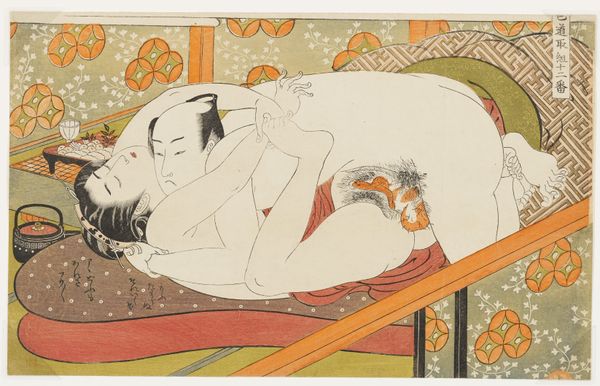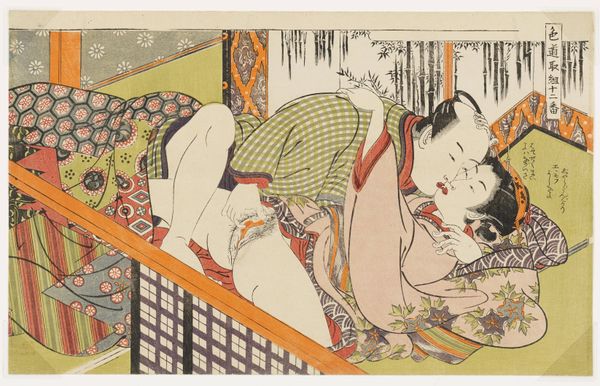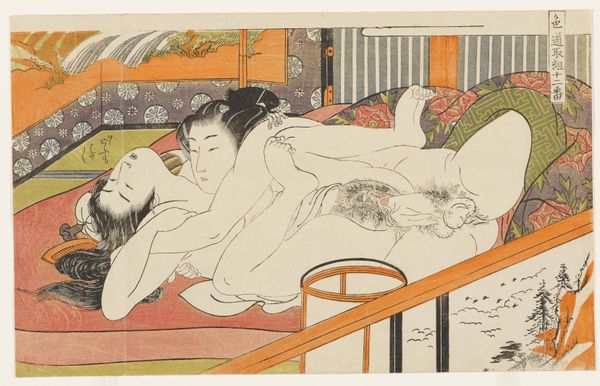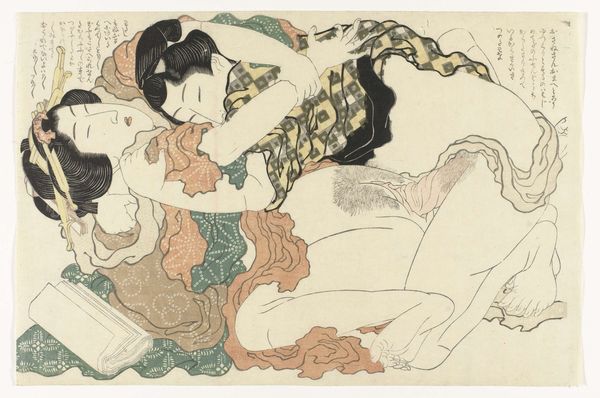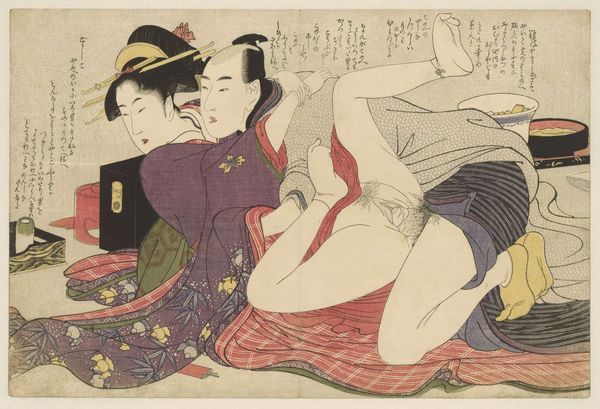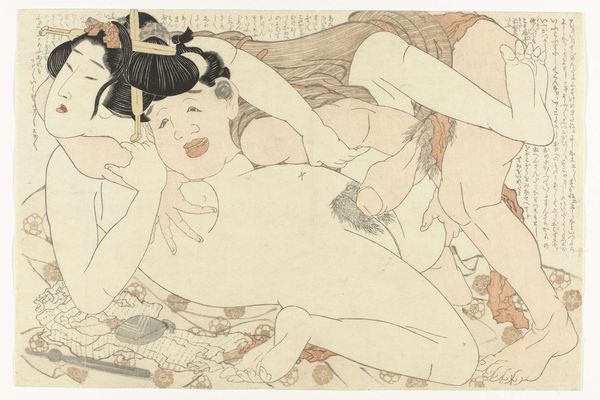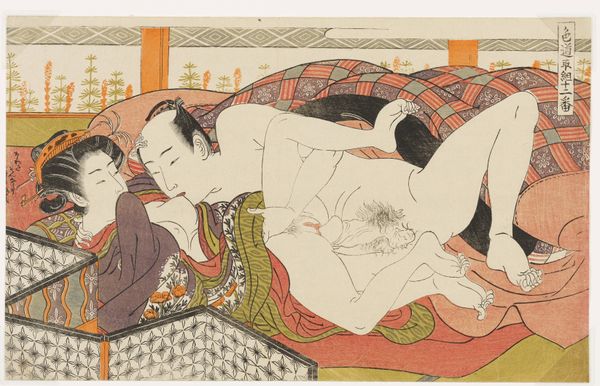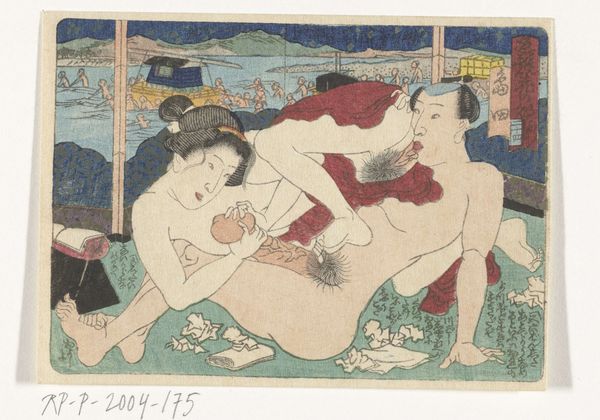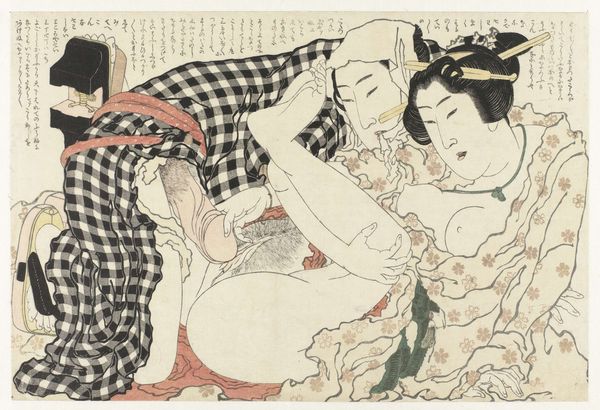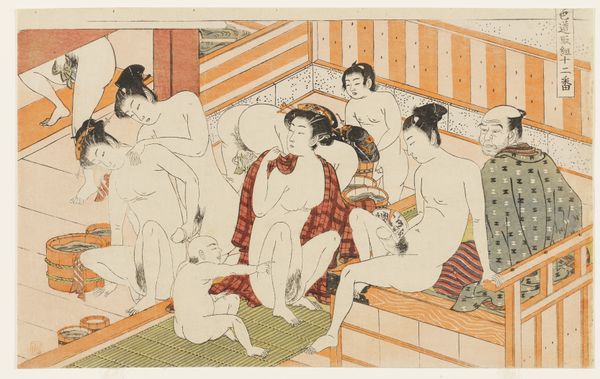
Copyright: Public domain Japan
Curator: I am immediately drawn to the quiet stillness emanating from this composition, almost meditative. Editor: That's interesting. Let’s dive into Paul Jacoulet's 1949 print, "Dans La Nature, Angur." The title, "In Nature, Angur", sets the stage. It's a color woodblock print, very much playing with Ukiyo-e traditions, portraying a reclining nude surrounded by lush, stylized vegetation. Curator: The layering of flora creates a symbolic language here, an idealized representation of the female form intertwined with nature's bounty. Look at the precision in the lines; each element tells its own subtle story, speaking of purity and harmony. I believe it’s aiming at a classical archetype. Editor: But there's a complexity in representing the female nude, particularly in this specific historical and social context. This wasn't simply an image of idealized beauty; it existed within a power dynamic, the male gaze of both the artist and potentially the intended audience. What are the cultural implications of portraying this woman, Angur, within this exoticised landscape? It raises questions about agency and objectification. Curator: It's not simply the 'male gaze' at play; Jacoulet was deeply interested in visual narratives as conveyors of emotional truth. He's carefully building up the subject, selecting certain symbols, balancing the composition—and he might have even felt empathy toward Angur! See how soft her eyes are. He clearly aimed at an aesthetic effect using these colours, those sinuous lines, to create a world that, regardless of the context you mention, offers some visual appeal. Editor: Fair, but that aesthetic appeal itself doesn’t exist in a vacuum. The flatness and stylized approach are aesthetic choices that simultaneously reference a cultural heritage, but are they respectfully referencing, or appropriating? To look at the soft color palette or elegant line work without critically evaluating the subject and cultural baggage does the art a disservice. We need to confront the complex intersections of beauty, power, and representation that are inevitably embedded within it. Curator: Your position sheds light on vital cultural dynamics that undoubtedly deserve consideration, but sometimes I still pause and ask myself what was really going through this artist's head. Editor: Agreed, the internal state of an artist matters. Let's sit a little longer with it, I suspect that if we can have an awareness of everything, there’s more we can learn here.
Comments
No comments
Be the first to comment and join the conversation on the ultimate creative platform.
